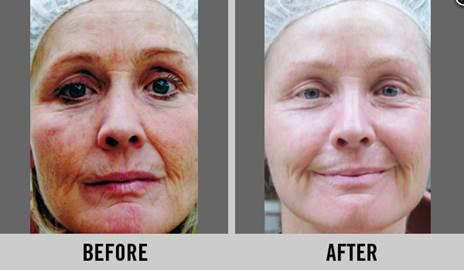
When trying to deliver results for clients, it can be easy to overlook pre- and post-treatments, making the peel or resurfacing treatment the star of the show. Pre- and post-treatments absolutely impact results however, and should be a part of every peel.
Why? Think of it like an artist. Before they begin a painting, they prime the canvas, and once they’ve finished they seal it to preserve their masterpiece. The skin, much like a canvas, needs to be primed to stimulate the rejuvenation process and prepare the skin for what is to come. Following the peel or any resurfacing treatment, the skin needs to be rebuilt and brought back to optimal health with proper care.
Maximizing the Pre-Treatment
Pre-treatment will vary based on the skin type and the goal of the treatment. This is an opportunity to create a truly custom treatment based on your client’s skin care needs and desired results. The following are some of our favorite formulas to pre-treat the skin based on certain conditions:
- Pigmentation – for clients who may have pigmentation issues, higher Fitzpatricks, or if you are performing a deep peel, using a brightener or tyrosinase inhibitor will help suppress melanin, and may help eliminate post-inflammatory hyperpigmentation (PIH), as well as brighten overall skin tone. This process will also pave the way for the acid formula to penetrate deeper. Ingredient suggestions: bellis perennis flower, arbutin (L), kojic acid, and lactic acid (L). Product: Naturale Mega Brightening Serum
- Acne – antibacterial support prior to treatment will not only help eliminate bacteria, but also the potential for excessive purging that occurs with acne skin. Ingredient suggestions: salicylic acid, totarol, and azelaic acid. Product: BHA Refine Gel and Blemish Serum.
- Acne scarring – depending on the build-up underneath skin, performing a pre-treatment will help enhance results, however a more aggressive approach is needed. Ingredient suggestions: salicylic serum, glycolic acid, lactic acid (L). Product: AHA Refine Gel and Salicylic A Serum.
- Aging – the right pre-treatment can help stimulate collagen and elastin, and support healing. It will also prepare the epidermis for acid penetration. Ingredient suggestion: a gentle vitamin A. Product: ChronoPeptide A
- Rough/thicker texture – a more aggressive pre-treatment will help stimulate the skin and begin to soften the epidermis for optimal acid penetration. Ingredient suggestions: glycolic acid, lactic acid (L), and retinol. Product: Skin Smoothing Gel or Retinol Supreme used nightly.
- Sensitive skin – for sensitive, rosacea-prone or thinner skin, a pre-treatment will start the building process, help the epidermis layer loosen, increase energy, and provide anti-inflammatory and antibacterial support. Ingredient suggestions: mandelic acid, arginine (L), phytic acid, pyruvic acid, vitamin A. Product: Mandelic Repair Serum or Retinal Repair used nightly for 2 weeks.
Repair and Rebuild with Post-Care
As I mentioned, when performing peels, you are creating an injury to the skin that disrupts the protective barrier resulting in a wound. Supporting the skin through the trauma will ensure proper healing and reduce the probability of complications. I should note too, a peel should never be performed if you are not prepared to treat the complications of that peel.
Common post-peel complications include:
- Pruritus (itching) – post peel itching is common for many skins, not just sensitive skins. Hydrocortisone and willow herb, a natural cortisone, will help soothe and calm the skin during the peeling process. Look to Calming Skin Gel and Vital Wound Relief.
- Post-inflammatory hyperpigmentation (PIH) – this is often caused by picking, so be sure to educate clients about the importance of not picking the skin that is peeling. If clients are particularly prone to PIH, send them home with epidermal growth factors to support the healing and repair process. Look to Growth Factor Serum.
- Discomfort or pain – this will generally ease after the first 24 hours, however you can support clients with ingredients that will reduce inflammation and provide cooling, soothing relief. Arnica montana is a wonderful, natural ingredient for this. Look to Arnica Therapy. It is also ok to recommend Tylenol or Advil, if needed, and if there aren’t any allergies.
While there are other complications that may occur, ingredients that support healing, and provide anti-inflammatory and soothing support will be important components to any post-care system. However, you must be able to read the client’s skin and take into account the type of treatment to customize a post-treatment plan specific to their needs. The proper pre- and post-care treatment will be essential to creating the best possible outcome and that will keep your clients coming back for more.
Question: What is your favorite pre- or post-treatment system?
